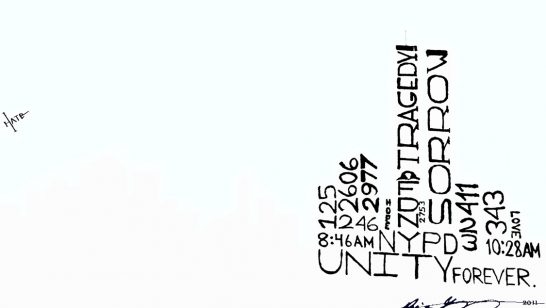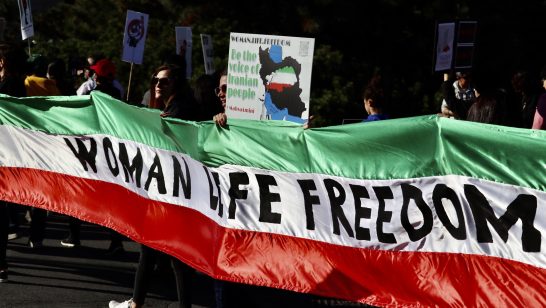
Since the beginning of his first term, President Barack Obama and senior administration officials have consistently expressed support for the pursuit of U.S. reconsideration and ratification of the Comprehensive Nuclear Test Ban Treaty, which prohibits all nuclear test explosions, anywhere. U.S. ratification is important in part because it would trigger action by other key states, including China, India, and Pakistan, which also must ratify before the CTBT can formally enter into force.
A year ago, in March 2012, Obama said that: “… my administration will continue to pursue ratification of the Comprehensive Test Ban Treaty.” Unfortunately, the administration has not launched the kind of effort necessary to achieve this long-sought and still vital nuclear disarmament and nonproliferation objective.
With the conclusion of the November 2012 U.S. election, however, the prospects for achieving U.S. ratification of the Comprehensive Nuclear Test Ban Treaty (CTBT) have improved. In February of this year, Acting Undersecretary of State Rose Gottemoeller said in a speech in Tel Aviv: “…ratification and entry into force of the Comprehensive Nuclear Test-Ban Treaty (CTBT) remains a top priority for the United States.”
Moving forward and gaining the necessary 67 Senate votes in support of ratification of the CTBT remains difficult, but is within reach. In 2013, Democrats have a 55-seat working majority, which means that the president and his allies would need to persuade at least a dozen pragmatic Republicans to secure two-thirds Senate support—an attainable goal if the President follows through on his commitments on the treaty and if key U.S. allies continue to press for CTBT entry into force.
The Case for U.S. Ratification Is Stronger Than Ever
Since the Senate’s brief debate on the CTBT 13 years ago, the arguments raised by opponents to the CTBT have been addressed. As the 2012 report by the National Academy of Sciences on “CTBT: Technical Issues Related for the United States” documents, maintaining an effective nuclear stockpile will require continued diligence, but it does not require nuclear test explosions.
Furthermore, the U.S. stockpile stewardship program is more successful and better-resourced than ever before. Even with mandatory cutbacks on U.S. federal spending, the U.S. nuclear weapons labs will continue to have approximately 10 percent more funding for maintaining and extending the service lives of existing U.S. nuclear warhead types than they did prior to 2009.
The National Academy report also confirms that with the combined capabilities of the International Monitoring System and U.S. National Technical Means, as well as tens of thousands of civilian seismic monitoring stations, no potential CTBT violator could be confident that a nuclear explosion of military utility would escape detection.
With the CTBT in force, the established nuclear-weapon states would not be able to proof-test new nuclear warhead designs, newer nuclear nations would find it far more difficult to build more-advanced warhead types, and emerging nuclear states would encounter greater obstacles in fielding a reliable arsenal. With the option of short-notice, on-site inspections, states could better detect and deter testing.
U.S. and Chinese ratification of the treaty are also an essential part of strengthening the credibility of their commitments in the 2010 NPT Review Conference Action Plan, which calls for early entry into force of the CTBT. Without progress in Washington and Beijing on CTBT ratification, their ability to head off future nuclear arms competition, particularly in the Middle East, South Asia, and the Korean peninsula will be curtailed.
These factors have led a substantial number of U.S. national security leaders to voice their support the CTBT, including a large number of former skeptics.
President Ronald Reagan’s former Secretary of State George Shultz said at a March 8 forum in Washington: “Yes I clearly think we should ratify that treaty. A Senator might have been right to vote against it when it was first put forward and right to vote for it now,” he said.
“The issue has kind of lost its attention. We need to get back on the offense,” Shultz said.
All of the United States allies have approved the CTBT and there is overwhelming global support for its early entry into force.
Now is the time for the foreign ministers from CTBT proponents, including the U.K, Sweden and Mexico (who are the current co-chairs for efforts to facilitate entry into force), Germany and other members of the 10-nation Nuclear Disarmament and Nonproliferation Initiative, to urge the leaders of the United States and the other remaining CTBT “hold-out” states to act.
Next Steps
Securing approval of the CTBT will require the kind of high-level, sustained effort the Obama administration pursued to win support for New START. The Senate’s 71-26 vote to approve New START in December 2010 shows that even controversial arms control agreements can be approved in a tough political climate when the executive branch devotes sufficient time and high-level attention, when key Senators seriously consider the facts, and when U.S. military leaders speak up in support of the treaty.
To date, the Obama administration has not yet launched a systematic and high-level political effort for the CTBT. There is no reason for further delay, but at the same time the process cannot be rushed. Preparing the ground for the CTBT will be a 1-2 year endeavor.
One key reason for a serious, step-by-step approach is the fact that the Senate has not thought seriously about the CTBT in more than a decade. Today, only 12 Senators who voted “no” on the treaty in 1999 remain and long-time CTBT opponent–Jon Kyl (R-Ariz.)–has retired.
This presents opportunities and challenges. A substantial number of Senators and staff are unfamiliar with the subject and need to take a close look at the new evidence regarding the treaty. Senators and their staff will need time to review the information, ask questions, and get responses.
President Obama will need to signal to the Senate, the public, the news media, and to his own administration that he is serious. To do so, he should soon appoint a senior, high-level White House coordinator or a high-level task force to push the ratification campaign along.
The Obama administration and CTBT proponents will also need to aggressively counter misinformation being put forward by hard-line opponents of the CTBT. Undecided Senators have a responsibility to base their judgments on the facts and not the outdated myths and misconceptions of pro-testing advocates.
The final result will depend on the politics of the moment and it will depend on the ability of CTBT proponents to make a strong case and bring forward the many U.S. military and scientific leaders who support the CTBT and to mobilize key political constituencies in support of the treaty.
It is past time to move on the CTBT. As President Dwight Eisenhower said five decades ago, on May 29, 1961, not achieving a nuclear test ban “would have to be classed as the greatest disappointment of any administration, of any decade, of any party.”
The opinions articulated above represent the views of the author(s), and do not necessarily reflect the position of the European Leadership Network or any of its members. The ELN’s aim is to encourage debates that will help develop Europe’s capacity to address the pressing foreign, defence, and security challenges of our time.



